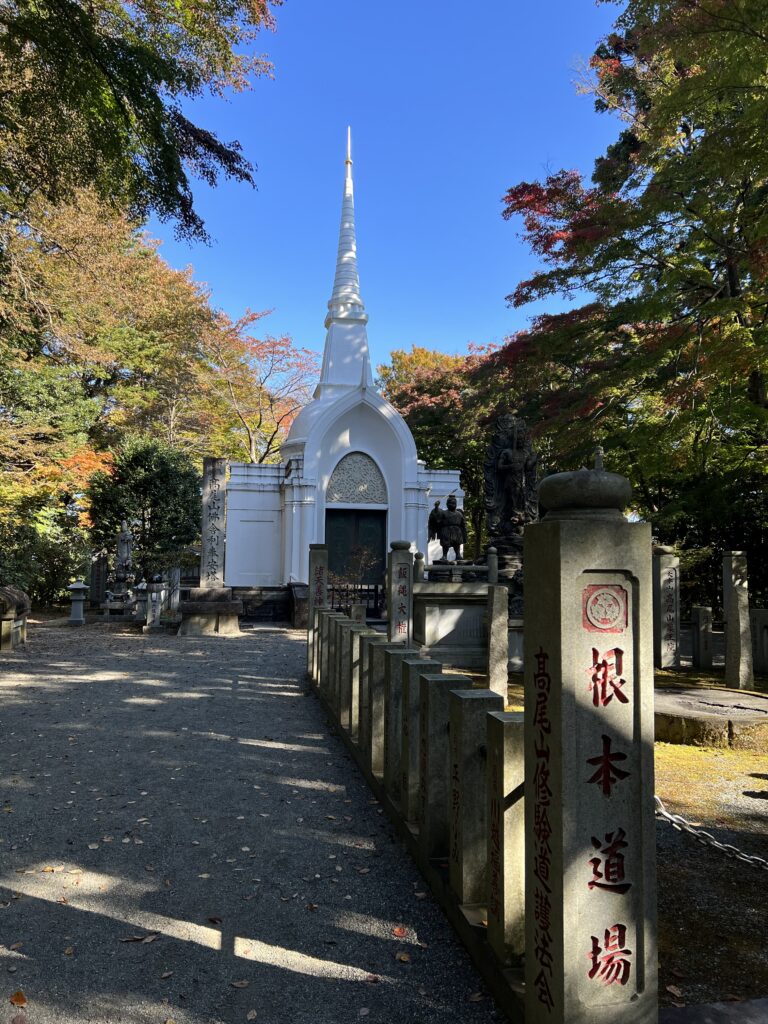At Yuki-en in Mt. Takao, you can see a white structure called a stupa which is to enshrine the ashes of Shakyamuni Buddha, the founder of Buddhism.
The ashes of Shakyamuni Buddha enshrined there were given by the late Rama VII (7th), the King of Thailand to Scout Association Japan in 1931 in token of friendship between Thailand and Japan.
As you know, Thailand is another Buddhist country.
This stupa was built in 1956 modeled on a Thai style stupa.
It is 18 meters in height and made of reinforced concrete.
The concept of stupa dates back to the 4th century BC in India.
A stupa was originally a mound-like or hemispherical structure built of brick and stone to enshrine the ashes of Shakyamuni Buddha.
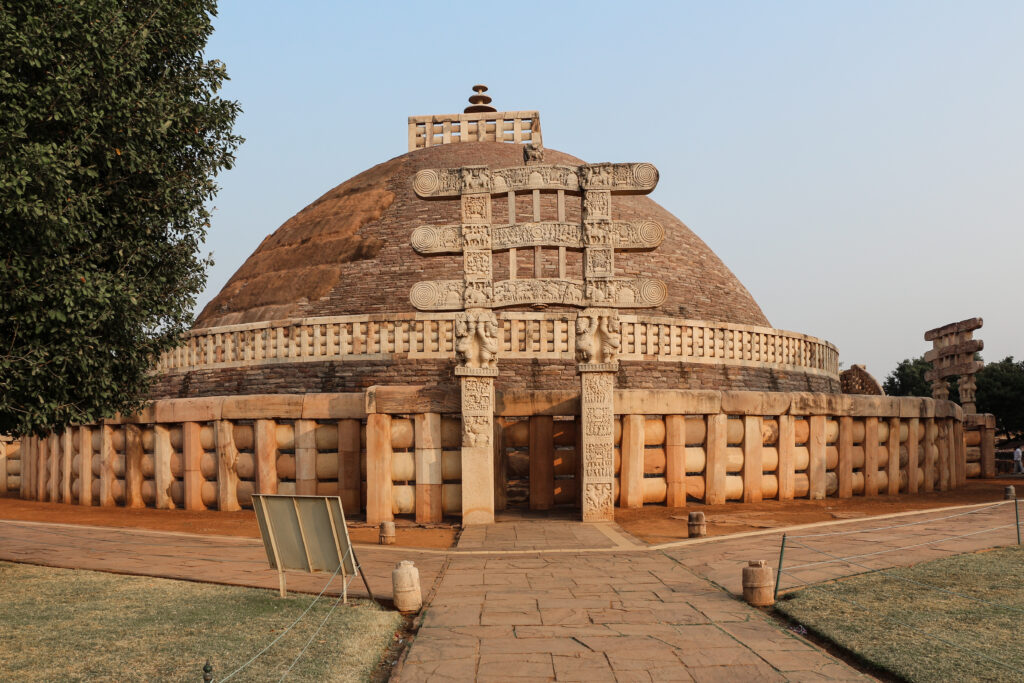
Author: Bernard Gagnon
https://upload.wikimedia.org/wikipedia/commons/7/7f/Stupa_1%2C_Sanchi_02.jpg
The above is the photo of an Indian version of stupa built in Sanchi in the 3rd century BC by Ashoka the Great which is one of the World Heritage Sites (https://whc.unesco.org/en/list/524/video).
It is actually the forerunner of a Japanese pagoda which is also supposed to enshrine the ashes of Shakyamuni Buddha.
If you have a closer look, you will notice that there is a spire decorated with layered canopies or parasols at the top of the stupa.
It is understood that a canopy or a parasol symbolized royalty and nobility in the ancient India as they had their servants put up a canopy or a parasol to create shade when they went out in the intense heat of summer in India.
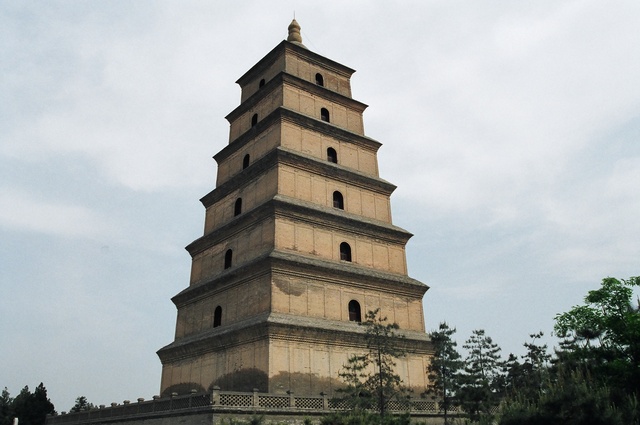
This is the Chinese version built in the early 8th century in Xian, which is another World Heritage Site (http://www.china.org.cn/travel/2014-09/04/content_33426898.htm).
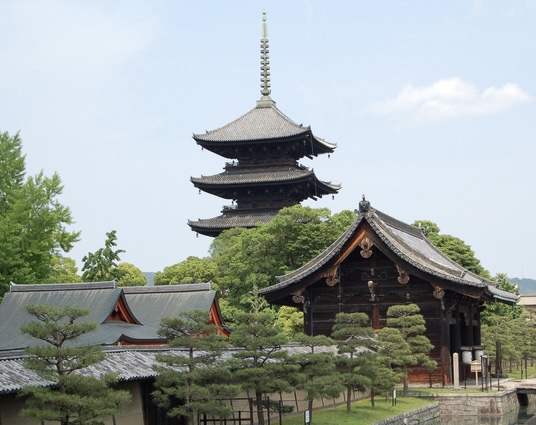
This is the Japanese version located in the precincts of Kyoogokoku-ji Temple, more commonly known as To-ji Temple in Kyoto.
The five-storied pagoda in the precincts of To-ji Temple is a reconstruction of the old structure that had originally been built in the early 9th century.
It was burnt down 4 times due to a lightning strike or otherwise.
The current one built in the 17th century is also another World Heritage Site (https://toji.or.jp/en/).
With the height of 54.8 meters, it is the tallest wooden pagoda in the whole country.
Five-storied pagodas are found throughout Japan.
The oldest five-storied pagoda in Japan is in the precincts of Horyu-ji Temple in Nara built some 1,300 years ago, which forms a part of “Buddhist Monuments in the Horyu-ji Area” that has been designated as one of the World Heritage Sites in Japan since 1993 (https://whc.unesco.org/en/list/660/).
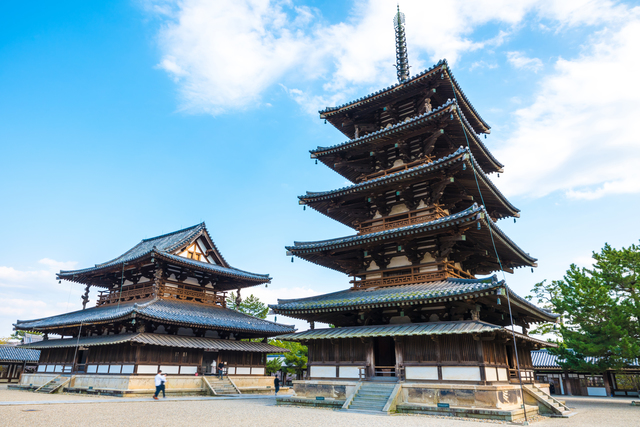
The five-storied pagoda in the precincts of Horyu-ji Temple is one of the oldest extant wooden buildings in the world.
It is understood that before the Meiji Restoration there were twenty-two (22) five-storied pagodas and now more than eighty (80) including a monument for the war dead.
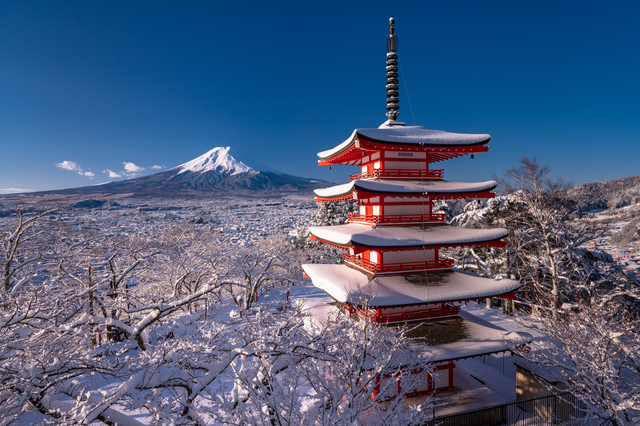
In spite of their great height, no five-storied pagodas are known to have collapsed in earthquakes while many of them were destroyed by fires.
That is, the stories don’t all move in the same direction at once – some sway to the left, while others sway to the right.
Since each story moves independently, the center of gravity doesn’t shift so easily, which minimizes the risk of the pagoda collapsing.
Many of the new high-rise buildings in Japanese cities including Tokyo Skytree, which is the world tallest self-supporting tower with the height of 634 meters, incorporate earthquake-suppression technology based on the principles used in traditional pagodas.
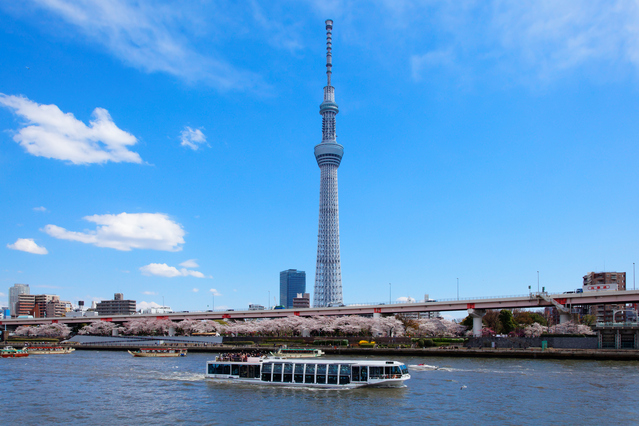
This architectural know-how dating back over 1,000 years lives on in those modern structures.
According to one theory, aside from the decorative spire at the top of a Japanese pagoda, which is called sorin in Japanese, the shape of five-storied pagoda itself represents the spire with layered canopies or parasols at the top of the Indian stupa and each of the stories of a five-storied pagoda represents one of the five elements in Buddhist philosophy which the whole world is supposed to consists of.
The five elements in Buddhist philosophy are called Godai or Gorin in Japanese (Panca-maha-bhuta in Sanskrit).
Each story of five-storied pagoda represents in ascending order, Earth (Prithvi in Sanskrit), Water (Apah in Sanskrit), Fire (Agnih in Sanskrit), Air (Vayuh in Sanskrit), and Void (or Space) (Akasah in Sanskrit).
Aside from a five-storied pagoda, there is a similar structure made of stone called a five-ring pagoda (or a five elements pagoda) in Japan.
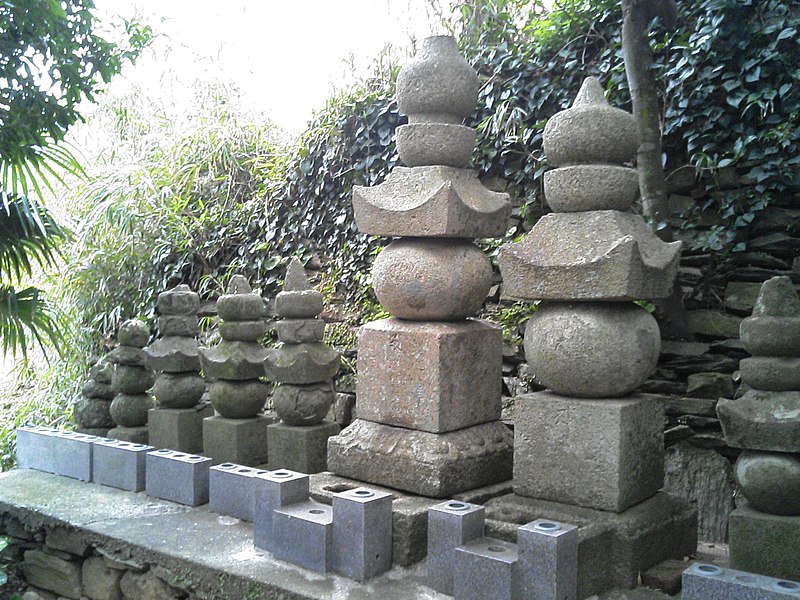
Author: Amake
https://commons.m.wikimedia.org/wiki/File:My%C5%8Drakuji_Towers_of_the_Five_Elements.jpg
These smaller stupas are used as tombstones or votive offerings, and are often hand crafted by those who present them to the Buddhist temple.
That is, the bottom story is square and represents Earth.
Next is spherical and represents Water.
The third story is triangular and represents Fire.
The fourth story is a reclining half-moon shape, representing Air.
Lastly, the topmost is the gem-shaped one representing Void (or Space).
Some of the Western people may misunderstand that the five elements in Buddhist philosophy called Godai or Gorin in Japanese should be the Japanese concept mainly because this concept was introduced in The Book of Five Rings (Gorin no sho – martial arts treatise) written by Miyamoto Musashi, a notable samurai and master of the sword in the early Edo period.
Some of you may also be aware that the ancient Greek concept of four (4) basic elements, these being Earth, Water, Air and Fire, plays the very important role in the 2000 bestselling novel titled Angels & Demons written by Dan Brown, an American author.
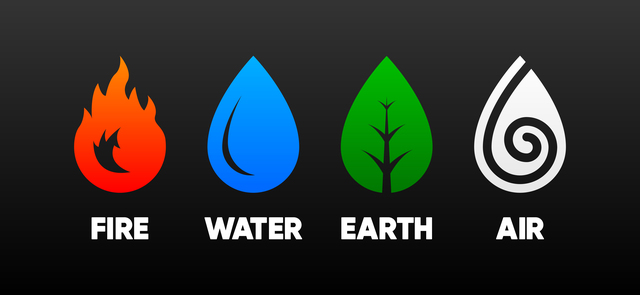
When I read Angels & Demons, I thought that this European concept is very similar to the Buddhist equivalent except that only Void (or Space) (Akasah in Sanskrit) is missing.
It is understood that this European concept dates from pre-Socratic times and persisted throughout the Middle Ages and into the Renaissance, deeply influencing European thought and culture.
In China, there is also a similar concept of the five (5) elements in the Yin Yang thought (or Taoism) which includes Wood, Fire, Earth, Metal and Water.
So, looks like Earth, Fire and Water are common in all the three (3) philosophical concepts mentioned above.
Having said that, among these elements, Void (or Space) (akasah in Sanskrit) sounds a very unique one, doesn’t it?
It is said that zero was discovered by Brahmagupta (598 – 670), an Indian mathematician, neither a European, a Chinese nor a Japanese samurai.
This may be thanks to the foregoing unique philosophical idea (i.e., Void (or Space) (akasah in Sanskrit)) originated in the ancient India?
I’m afraid that I’m prone to stray off the subject.
As you can imagine, it is virtually impossible to obtain the ashes of Shakyamuni Buddha.
So, it is understood that in Japan jade stone or quartz glass that is processed into small grains are generally used as a replacement of the ashes of Shakyamuni Buddha.
Alternatively, scrolls of sutra may be enshrined at a five-storied pagoda which also appears to be the case with the Chinese pagoda mentioned above.
Having said that, it is highly likely that the ones enshrined at the Thai style white stupa at Yuki-en in Mt. Takao are the authentic ashes of Shakyamuni Buddha, which is supported by archaeological evidence.
That is, in January 1898, in India then being governed by Great Britain, a resident officer from Britain, William Peppe, discovered a pot with human bones when he was excavating a tumulus close to the border of Nepal at Piprahwa.
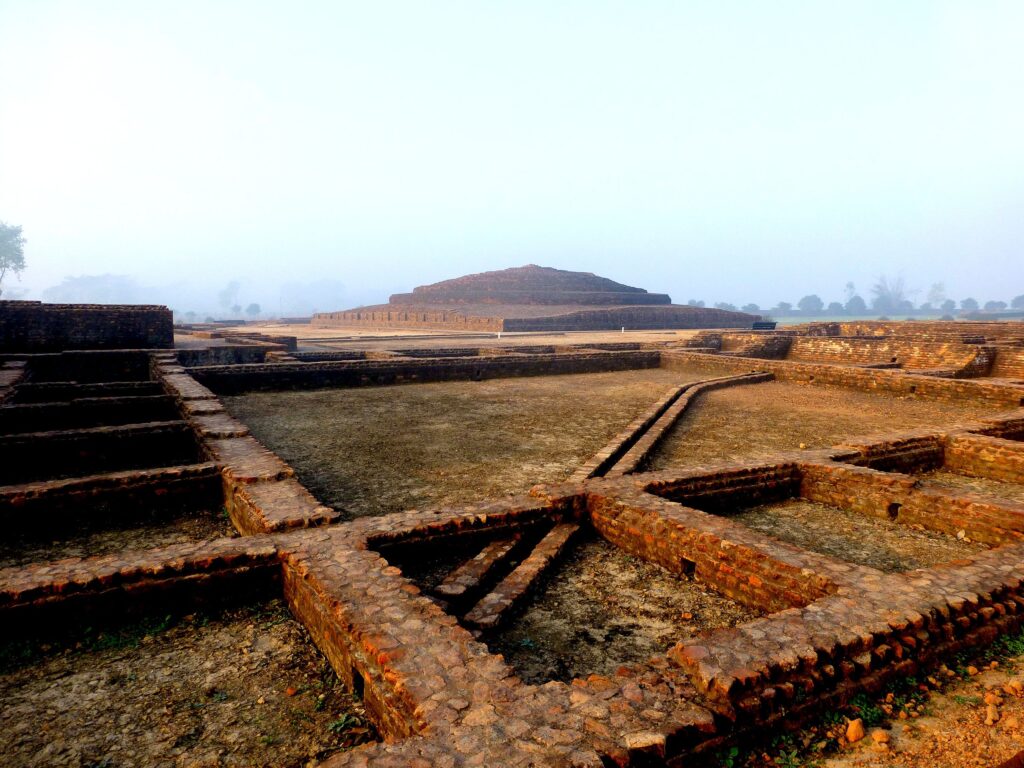
Source: https://upload.wikimedia.org/wikipedia/commons/6/69/Stupas-Original-00021.jpg
On the side of the pot, there are some ancient words written in the 3rd century B.C. to the effect that the pot of the holy remains of Shakyamuni Buddha is enshrined.
Looks like the government of India, which had long been non-Buddhist country whose population largely consisted of Hindus and Muslims, decided to keep the pot in The Indian Museum in Kolkata but gave the ashes of Shakyamuni Buddha to the royal family of Thailand, which has long been one of the most enthusiastic Buddhist countries, in 1899.
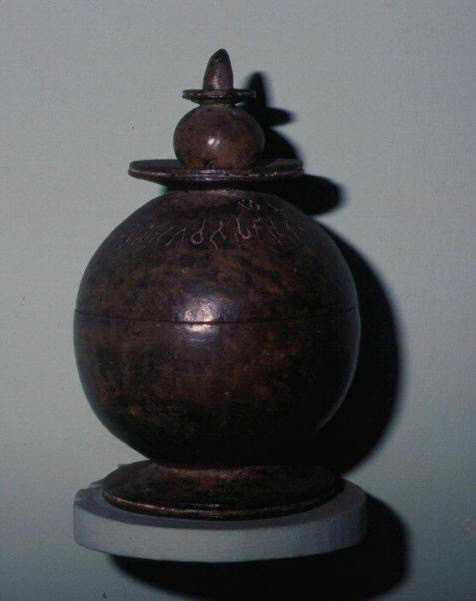
It is understood that the then king of Thailand, Rama V (5th) enshrined the ashes of Shakyamuni Buddha obtained from India at the famous Buddhist temple in Nakhon Pathom called “Phra Pathom Chedi”, the world tallest stupa, and other Buddhist temples such as “Wat Saket” in Bangkok.
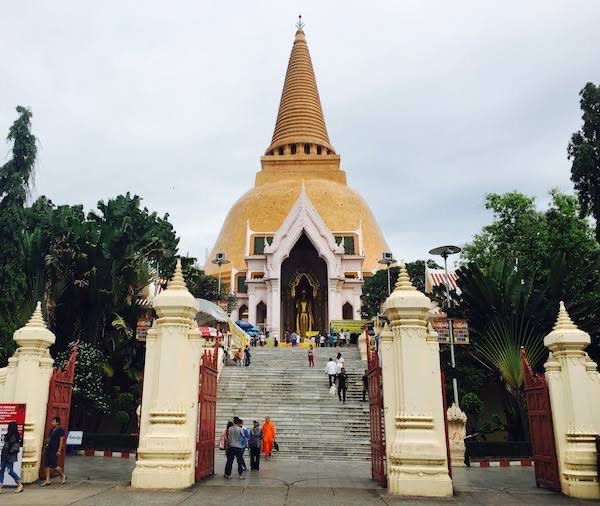
He gave some of the ashes of Shakyamuni Buddha to other Buddhist countries including Sri Lanka, Myanmar and Japan in 1900.
Nittai-ji Temple formally known as Kakuou-zan Nittai-ji Temple is a Buddhist temple located in the city of Nagoya, Aichi prefecture, Japan.
Nittai-ji Temple literally means a temple of Japan and Thailand.
Kakuo means Shakyamuni Buddha.
Nittai-ji Temple was built in 1904 in order to enshrine the ashes of Shakyamuni Buddha, which the then King of Thailand gave to Japan in 1900.
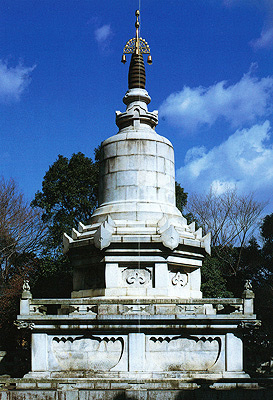
So, we could say that we have only two (2) places to enshrine the authentic ashes of Shakyamuni Buddha in Japan.
I suspect that when Rama VII (7th) gave some of the ashes of Shakyamuni Buddha to Scout Association Japan in 1931 he did not know that his father had already given some of the ashes of Shakyamuni Buddha to Japan back in 1900.
Incidentally, do you like sushi?
In the jargon of the sushi shop, toppings are called neta while the rice base for the sushi is known as shari, literally, the ashes of Shakyamuni Buddha.
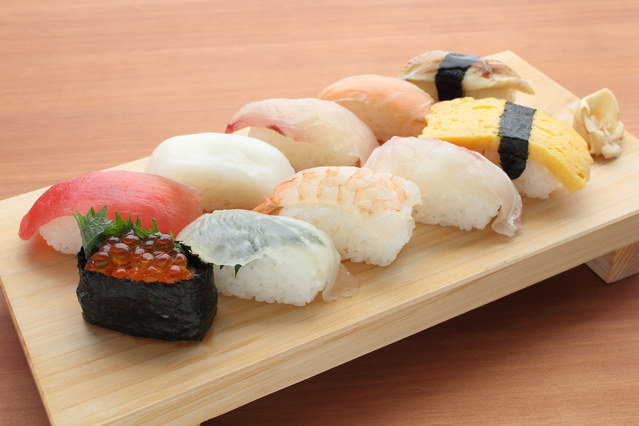
One theory is that it’s because grains of rice resemble the ashes of Shakyamuni Buddha or their substitutes made of jade stone or quarts glass.
Another theory is that this comes from sari which means rice in Sanskrit.
The Thai style white stupa at Yuki-en in Mt. Takao is a very attractive photogenic subject all year around.
Further, we could say that it is also a very spiritual place in that the authentic ashes of Shayakyamuni Buddha are enshrined there.
I’m afraid that many of the visitors to Mt. Takao are not aware of the significance of this place and passing through it without stopping there.
What a shame it is!
